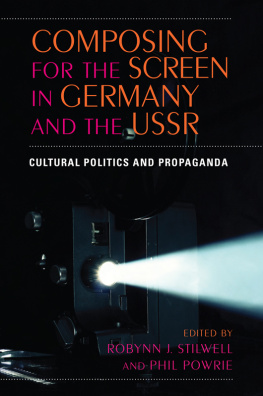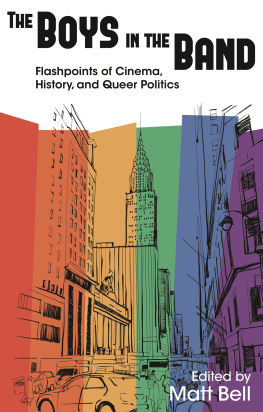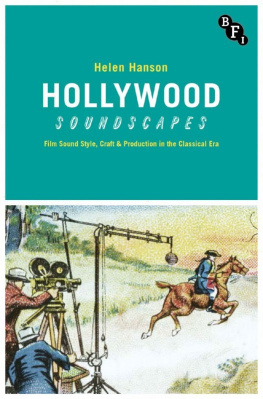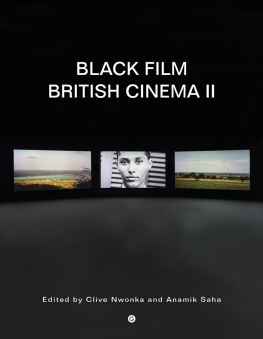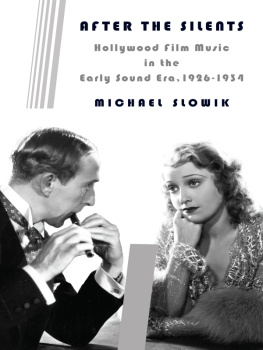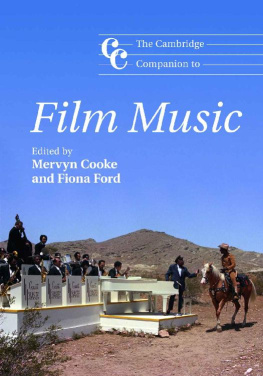This book is a publication of
Indiana University Press
601 North Morton Street
Bloomington, IN 47404-3797 USA
http://iupress.indiana.edu
Telephone orders 800-842-6796
Fax orders 812-855-7931
Orders by e-mail iuporder@indiana.edu
2008 by Indiana University Press
All rights reserved
No part of this book may be reproduced or utilized in any form or by any means, electronic or mechanical, including photocopying and recording, or by any information storage and retrieval system, without permission in writing from the publisher. The Association of American University Presses Resolution on Permissions constitutes the only exception to this prohibition.
The paper used in this publication meets the minimum requirements of American National Standard for Information SciencesPermanence of Paper for Printed Library Materials, ANSI Z39.48-1984.
Manufactured in the United States of America
Library of Congress Cataloging-in-Publication Data
Composing for the screen in Germany and the USSR: cultural politics and
propaganda / edited by Robynn Stilwell and Phil Powrie.
p. cm.
Includes bibliographical references and index.
ISBN 978-0-253-34976-7 (cloth)
ISBN 978-0-253-21954-1 (pbk.)
1. Motion picture musicGermanyHistory and criticism. 2. Motion picture
musicSoviet UnionHistory and criticism. 3. Music and state. I. Stilwell,
Robynn Jeananne. II. Powrie, Phil.
ML2075.C66 2007
781.5420943dc22
As a medium, cinema is now over a century old; the musical genre of film music is at least that old, arguably older than the medium itself, extending back through magic lantern shows and Victorian melodrama into the entire history of theatrical presentation. Music provides shock absorbers for the suspension of disbelief and an underlining, highlighting, underscoring of visual and verbal signals from the abstract and structural to the narrative and emotional. The vocabulary and syntax of musical gesture has changed less than those of the visual medium to which it has been allied, and much of its specificity (and even its generality) has been taken as given.
Despite the long history of film music, serious academic study is still fairly new, really only coming into its own as a discipline in the past two decades. That is not to say that there has not been a substantial amount written on the relationship between music and the screen, but for much of the past century, it has been mostly prescriptive, occasionally descriptive, and only recently analytical. Because of the relative volume of the writing, there is a tendency to think we know what the history and technique of film music is, or at least that the ground has been fairly well mapped.
The problem with this conception is that it breaks down so quickly. For one thing, there is not so much a body of literature as a wealth of materials scattered among trade papers, fan magazines, philosophical treatises, and only occasionally music journals.1 Much of the writing, particularly during the decade of the 1920s, is of a practical nature, as music directors from studios and theaters, from the centers and the front lines alike, discussed the technique of accompanying silent movies. At the same time, film theorists were struggling to understand their new medium and its specificity, including the reasons (some implicit, some explicit) why another mediummusicseemed so intricately intertwined with the flickering images on the silver screen. Once sound film and the modern technique of film composition, wedding sound and image on a single strip of film, became well-established by the beginning of World War II, both the broader aesthetic musings of the philosopher and the nuts-and-bolts technical writing of the composer and musician dwindled and a middle-ground critical literature arose. However, the split between those who are interested in film as a medium (who often ignore the sonic element, including music) and the musically inclined (who often ignore the screen) remains a consistent divide even today.
Undoubtedly the period in which the relationship between image, narrative, and music was under the greatest scrutiny in the literature was that surrounding the coming of sound. Everything that had been established in the fledgling film medium was thrown into question. The flexibility and multiplicity of performative film musiceach audience was presented with a potentially different and new experiencewas reduced to a single multi-faceted, repeatable work, an experience somewhere between a theatrical piece and a painting. This had obvious disadvantages in its limitation to a single statement, but also great advantages in the relative flexibility of the act of composition. The interaction of the various interrelated media shifted from the point of performance and reception to that of conception and creation. For those who would argue that film was an art, not merely a commercial commodity, this was a significant shift of control, in line with many impulses within modernist artistic circles.
Of course, this period of flux in film production and aesthetics took place during one of the greatest periods of political upheaval of the twentieth century. Film as a modern art emerged after World War I and the Soviet Revolution of 1917, and the transition to sound occurred roughly a decade later as the political forces that led to World War II began to converge. It is perhaps not surprising that the two countries that produced the highest concentration of serious writing on the subject of film music were Germany and the USSR.
By the advent of sound film, both Germany and the USSR had distinct national cinemas that were thriving: Germany had a level of production and refinement of style rivaled only by Hollywood; the Soviet Union, although more restricted by the technology and its own deprivation of the time, had some of the most vigorous and adventurous thinkers engaged in debate about cinema and the arts more broadly. Both the German and Russian cultures were long predisposed to explicit theorizing about aesthetics and the role of the arts in society; and political developments in these two nations brought arts role in society directly into question at a time when cinema was emerging as a major art and changing so fundamentally in its constitution as a multimedia art.
The volume of writing by such key figures as Sergei Eisenstein, Theodor Adorno, and Hanns Eisler, and the overtly political context of the music and films produced in those countries at this time, has led us, perhaps, to an over-confidence that we really know about the film music of the period. How did the theorizing stack up to the practice of film scoring?
This question can be posed at a number of levels, from the positioning of the theorist in the political/industrial structure to the details of the finished film-music product. Eisenstein embraced communism but was often in conflict with Stalins regime over everything from the usual attacks of formalism to essentially commercial issues such as budgeting and resources; his writings are prescriptive and written alongside the development of sound-film technique and aesthetics, and as such are tinged with optimism and idealism. Eislers communist ideals brought him more sharply in conflict with the Nazi Party (and later the U.S. House Un-American Activities Committee); he was writing after escaping Germany and on the cusp of the Cold War, and his distaste for the industrial practices of Hollywood tingesand sometimes paints in broad brusheshis comments in

